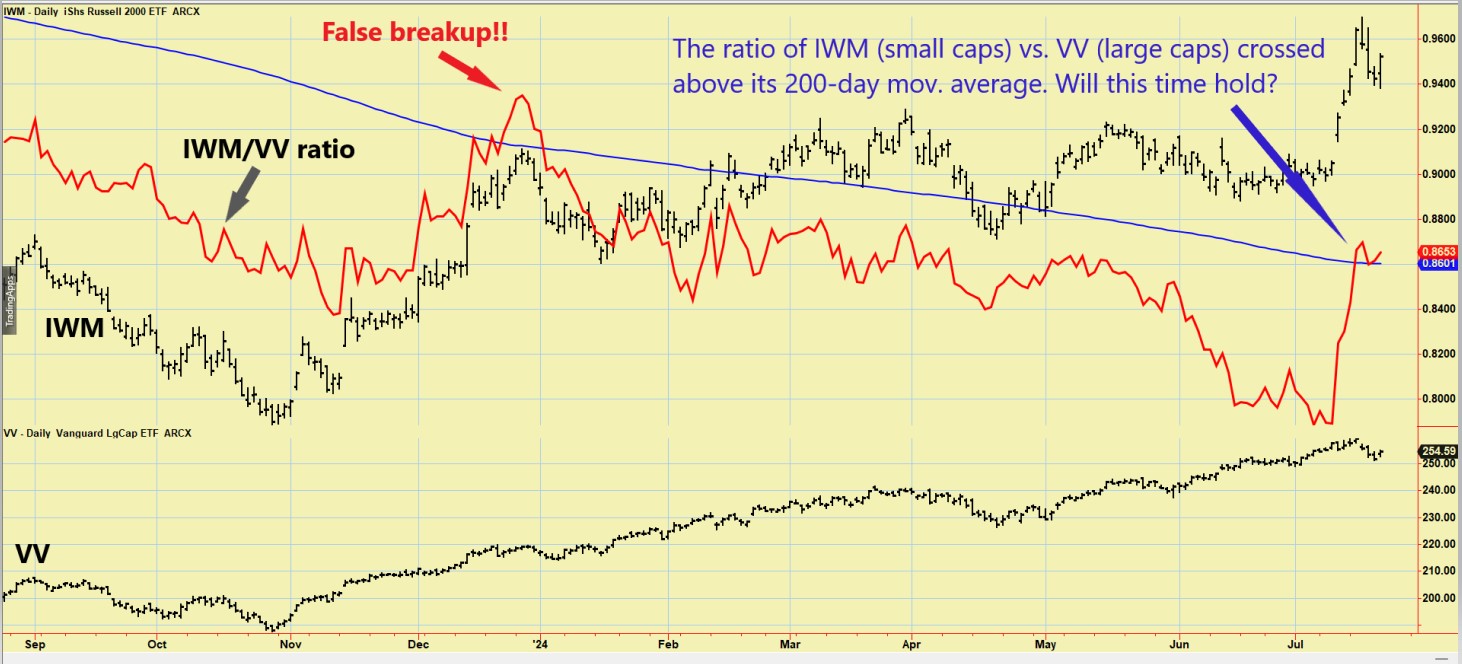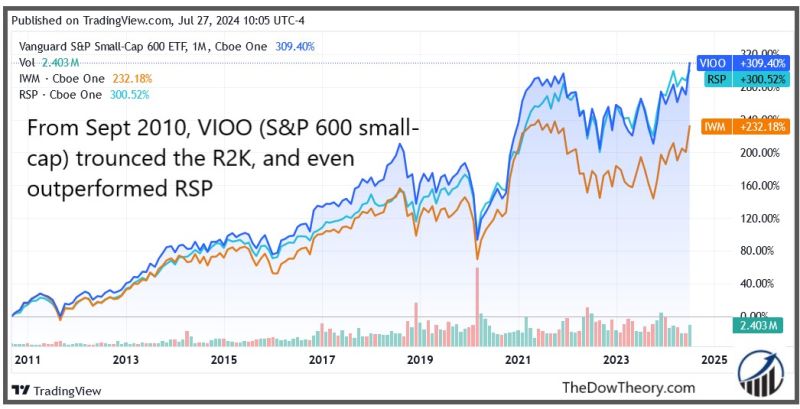
Understanding Small Cap Stocks in the Current Market
Expanded on 8/27/24
Will small caps continue outperforming large caps for a considerable time? Or have we just seen a flash in the pan? This is a question on many investors’ minds. While recent trends might suggest a resurgence of small-cap stocks, as shown by the chart below, the broader market dynamics hint at a different story.

I am convinced we are heading into a “winner-takes-all” economy, as Mark Hulbert (WSJ) has been suggesting since 2017.
Globalization and technology have created favorable conditions for mega companies like Apple, Amazon, and Facebook. These behemoths are leveraging their scale and technological advancements to dominate markets worldwide.
Even if globalization somehow unwinds, technology will continue to offer an advantage to small-cap companies. The rapid pace of technological innovation ensures that large-cap companies with substantial resources can stay ahead of the curve, continuously improving efficiency and market reach.
Furthermore, the regulatory environment, which places undue compliance burdens on companies, clearly favors the big guy over the small guy. Large companies have the resources to navigate complex regulations, whereas smaller companies often struggle to keep up. So, I would not be surprised to see large-cap stocks outperforming their small peers for a long time. I am not saying that all small caps are doomed, but many will suffer.
Moreover, many small-caps are based on hype, and there are no actual earnings (or potential to have them) behind them. Spencer Jakab (WSJ) points out that the Russell 2000 Index’s lenient criteria for including stocks (just based on market capitalization) have allowed numerous low-quality stocks to enter the Index. He rightly argues that the S&P Small-Cap 600 is a far superior benchmark, as it imposes stricter requirements for stock inclusion.
I created the chart below, which illustrates that while the Russell 2000 may experience occasional periods of outperformance, it is generally a poor investment choice due to the presence of many suboptimal companies among its constituents.

So, while I may occasionally favor a R2K constituent stock based its own merits, I am no special friend of trading any small cap just because “small is beautiful”. Selection is vital.
The U.S. Advantage in the Global Economy
In the same vein as large companies, the USA is the country best placed to profit from the new normal. In fact, it has been taking the lead since at least 2009, as attested by the U.S. stock market performance vs its European peers. The U.S. has consistently shown resilience and earnings growth for shareholders, driven by its robust economic policies, innovation, and global influence.
I follow stock trends, but even more vital is to follow countries’ trends. Monitoring the economic health and policies of different countries can provide valuable insights into market movements and investment opportunities.
Key Takeaways for Investors
- U.S. Market Attractiveness: Despite its challenges, the USA remains one of the most attractive destinations for capital. It is the “less dirty shirt in the laundry basket” by a long shot. I don’t buy into the thesis that Europe or Emerging markets are cheap. They are cheap for good reason: They lack earnings and have dire perspectives unless they dramatically change their economic policies.
- U.S. Stock Indexes and Trend Following: Given that many U.S. (and world) companies are having and are likely to have a hard time in the future, stock indexes coupled with trend following to protect against the downside is my undisputable bet. What kind of trend following? Many trend-following systems are suboptimal and don’t stand scrutiny. The trend-following system must provide you with a track record spanning at least +20 years and have survived several bear markets. My trend-following systems boast a record starting as far back as 1953, so we can trade them with confidence.
- Challenges in Stock Picking: If the future is probably going to be unkind to most stocks, most stock-pickers will suffer. What worked in the past (buy a diversified portfolio, hold it for a long time, and reap the reward) will no longer work. But don’t worry, as the saying goes, “there is always a bar full of people.” We can adjust our stock-picking strategy to meet the new normal. More on this in a future post.
For more insights into market trends and investment strategies, you can explore the detailed indicators and analysis available at The Dow Theory.
By focusing on these key areas, investors can better navigate the complex and evolving financial landscape, ensuring their portfolios are well-positioned for long-term success. The happy years of buy and hold are over.
Sincerely,
Manuel Blay
Editor of thedowtheory.com




